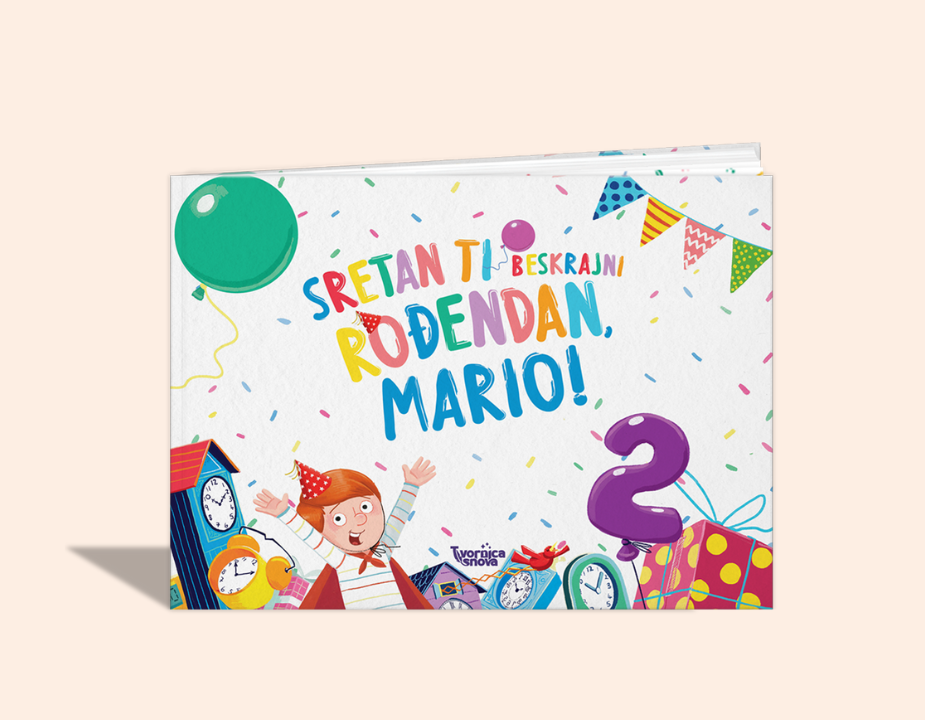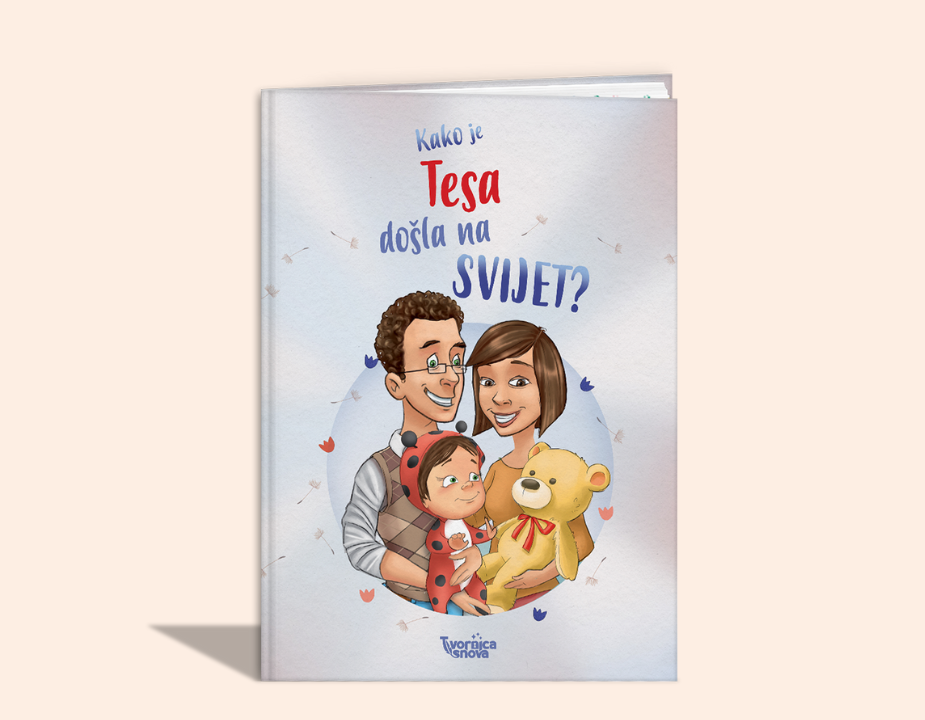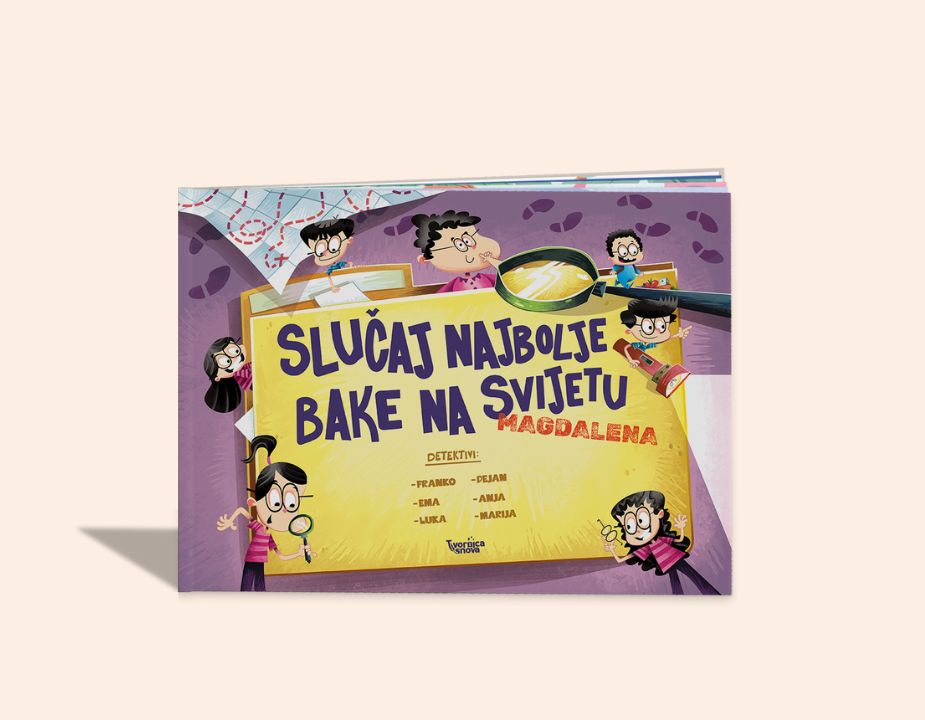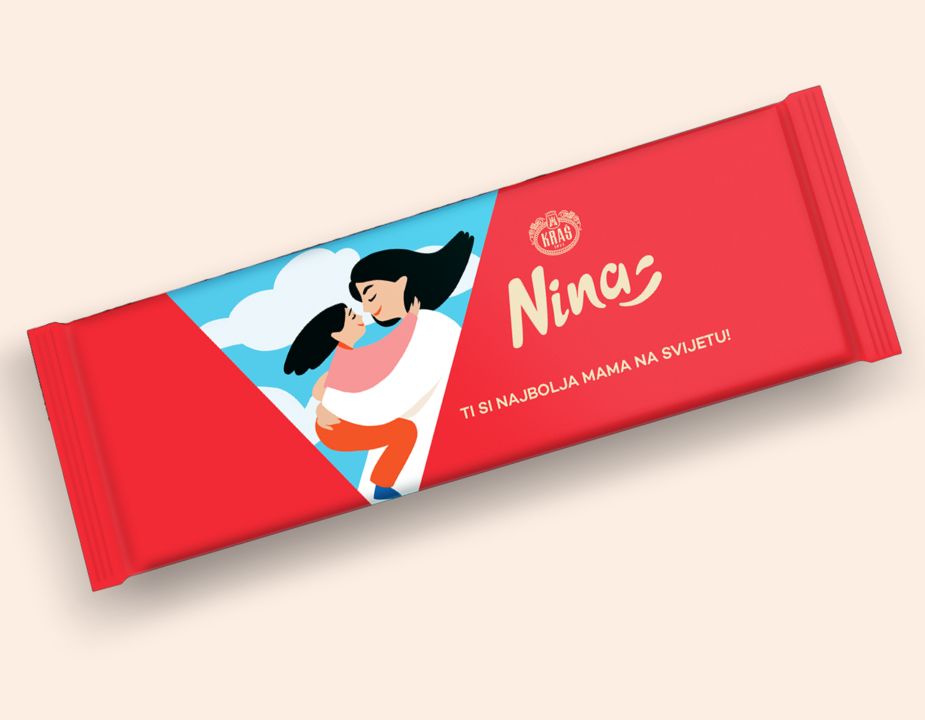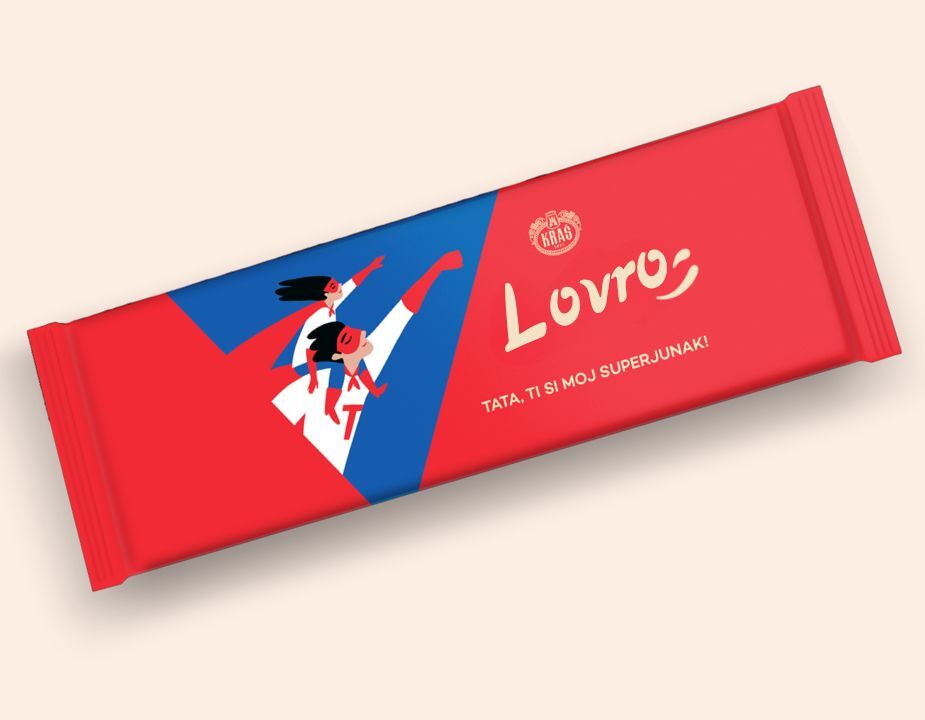Author Andrijana Majstorović: ‘Grandmothers are vital for our upbringing, we wanted a book that would make them happy and celebrate everything they do for their grandchildren’
Andrijana Majstorović is behind the new personalized book "Where's Grandma Gone?", which celebrates the greatest love of all, that between grandmother and grandchild.
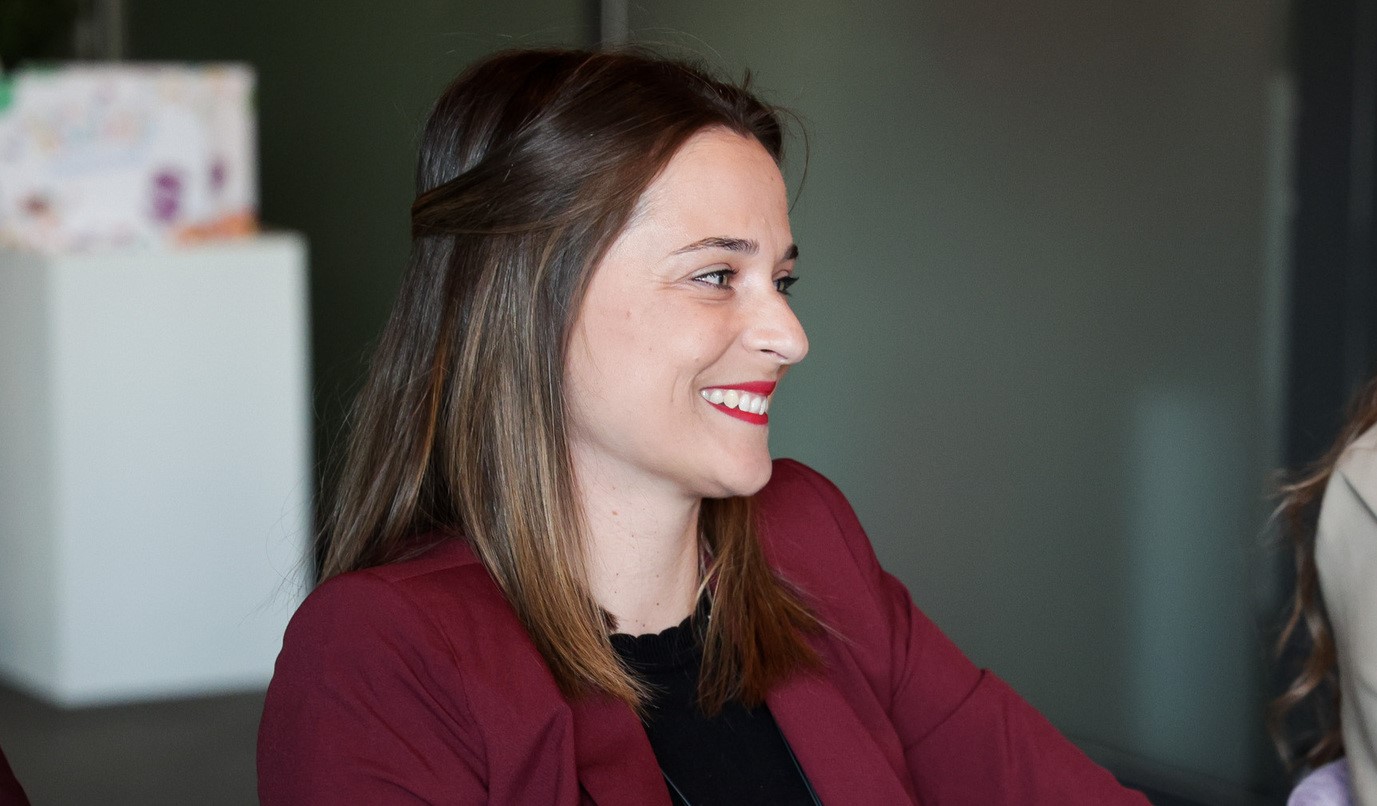
Pluma studios recently published a new personalized book “Where’s Grandma Gone?” which celebrates one of the greatest love of all – the one between a grandmother and her grandchild (or grandchildren). The main link in the chain of creation is certainly the author Andrijana Majstorović, who, in this interview, decided to give the readers a closer look into various aspects of the process of creating personalized books in general, as well share insider secrets about the newest title in Tvornica snova’s collection. This book is a massive undertaking and a challenge for everyone involved, because it is a book in which, in addition to the character of the grandmother, it’s possible to personalize up to 6 characters of children, i.e. grandchildren.
Andrijana Majstorović spoke not only about her newest creation, but also about her love for the written word in general. She also shared what her writing process usually looks like and answered the age-old question – is writer’s block real or just a myth? Moreover, author Andrijana Majstorović also touched upon some common misconceptions people usually have about writers and revealed if she agrees with them, as well as shared a message to everyone that wants to write a book. Find out the answers to those (and many other) questions below.
Andrijana Majstorović: ‘I don’t have to get into a child’s mind while writing stories. I can get into my own mind whenever I want. That is enough, as my mind is quite similar to a child’s. ‘
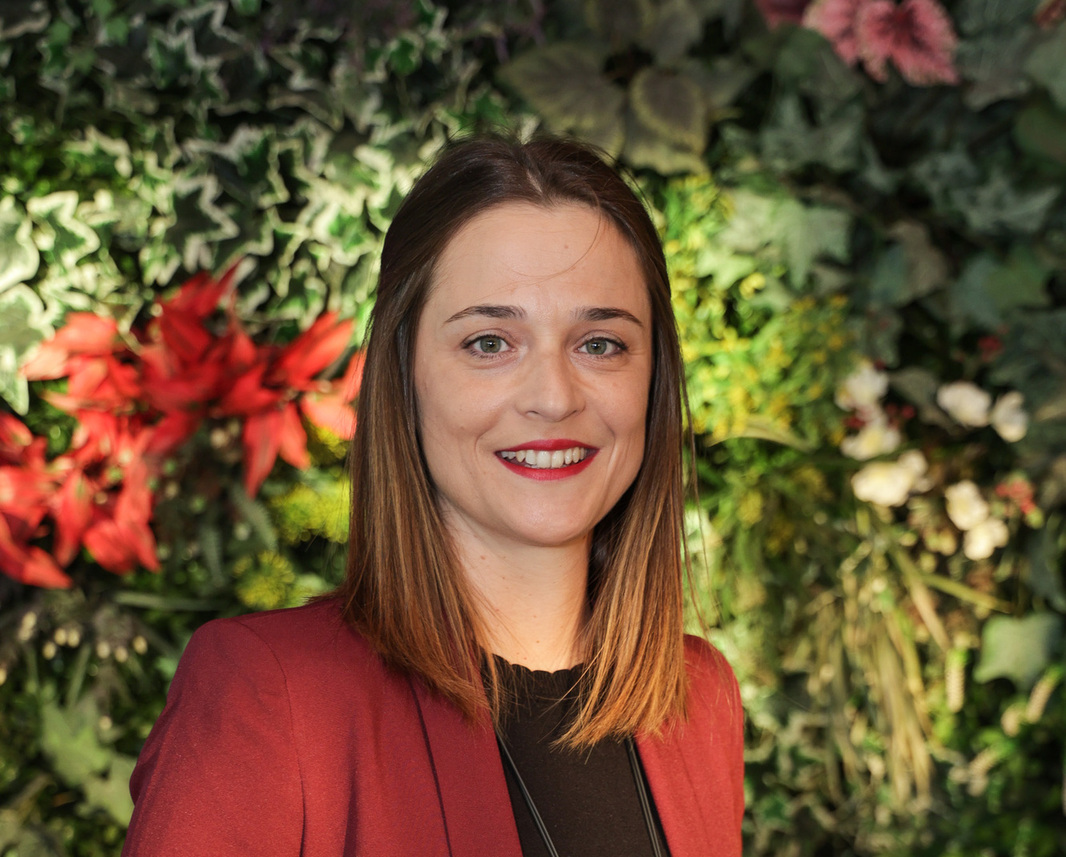
1. First things first, where does your love for writing personalized children’s books stem from?
From my love of reading. I should probably thank my mother for that. Ever since I was a child, she basically fed me books. Although, I wasn’t really a child that needed much convincing. I found the beauty of reading on my own fairly young. I remember wondering who writes all those books and imagining what a wonderful profession that must be. So, first came reading. Then writing. Then I began writing children’s books, and finally I focused on writing personalized children’s books.
2. Do you have a favourite children’s book author, someone whose books inspire you in your literary creativity?
I think I read more children’s books as an adult than as a child. And it’s not only related to the work I do. I love children’s books, I never outgrew them. I don’t know if this indicates a little bit of my infantilism or if I simply came across a real treasure of children’s literature – wise and brilliant, written so that you can read them forever. The list of favourite authors would be long, so I will just say that I am most emotionally attached to the children’s novels of our great Miro Gavran.
3. How did you come up with the idea to write specifically about grandchildren and grandmothers in the new personalized book “Where’s Grandma Gone?”
The idea came from the creative environment of Tvornica snova. It often goes like this: our creative team gets together and we talk about the next title we want to put on our virtual shelf. Who is the target audience, what message do we want to convey, what feelings do we want to evoke. Grandmothers are key figures in our upbringing. We wanted a book that would celebrate everything they do for their grandchildren, a book that would touch them and make them happy, but also encourage them to put their grandchildren on their laps and read together. Not long after that workshop, I appeared with the first draft of the story “Where’s Grandma Gone?”
4. How long did it take to write this book?
I was very lucky with this story. The creative juices poured out and letters, words and sentences appeared on paper in just 10 hours, give or take a few. That’s how it goes sometimes. Usually not, though. 🙂
5. Did you perhaps find at least a bit of inspiration in your relationship with your grandmothers, and what is your favourite childhood anecdote related to your grandmothers?
Unfortunately I did not. I didn’t have a relationship with either of my grandmothers. It is the way it is. However, for the past 8 years, I have had the opportunity to watch my mom and her granddaughter, my niece. Their relationship is everything I imagined a real grandchild-grandmother relationship to be. I stole a bunch of ideas from their daily dynamics.
6. The book is very funny and really shows the train of thought of a child and his endless imagination. How did you “get into” children’s heads when writing this story?
I don’t have to get into a child’s mind while writing stories. I can get into my own mind whenever I want. That is enough, as my mind is quite similar to a child’s when I want it to be. However, for 8 years I have had the opportunity to hang out with a beautiful child full of great ideas – my niece Petra. She has helped a lot. She is my inspiration and my best critic.
7. Which part of the book was the hardest for you to write, and which part was the most fun?
The basic idea of the book was already terribly entertaining – what could children think of in response to the question: Where has Grandma gone? Was she abducted by aliens? Or did she run off on a trip around the world? Is she playing in the park? Or did some king invite her to the court to prepare the best meals just for him? All of these scenarios were endlessly fun. The most difficult thing was to adapt the text to work in the case of not only one child, but also two, three, and so on – up to a total of six children.
8. What is noticeable is that the illustrations in the new book are quite different from those in the previous books, all because of Kyle Beckett’s distinctive style. How did you decide to work with him and change your style?
The story is silly and funny, so we wanted the illustrations to match that. Kyle has long been on our list of favorite wacky illustrators, and as soon as the text was ready, we sent him a request for a test illustration. The illustration was genius, and so was the continuation of the collaboration.
9. What age of children is the book intended for and why?
It is intended for children of preschool and early school age, which is our usual target group. In addition, it is at this age that children spend the most time with their grandmothers.
10. What would you say is the most difficult part of the process of writing a personalized book, and books in general?
Writing is a difficult undertaking, which requires a lot of courage. First you have to dive into your inner self; there is no staying on the surface. And then you need to expose yourself to the world and give everyone the opportunity to read what you found there.
And personalization comes with its limitations. From the technical ones, for example the fact that my use of cases must be limited (because we cannot expect the user to decline names when ordering a book), all the way to the ones regarding the content – you need to be careful when writing about characters because they will be personalized later. This is the paradox of personalization: in order for a book to be personalized, it must be universal.
11. Is writer’s block a truth or a myth? If you’ve ever encountered it, how do you usually get rid of it?
I am not familiar with the kind of block that is most often talked about. It implies that your writing goes to a certain point where it stops for a short time. Then you read, walk, cook – and the writing starts again. I have a different experience. Writing is always a struggle for me. In a way, I’m in an eternal block. Or I’m never in it, if we assume that’s the way it is with writing.
12. What does your writing process look like?
Sometimes I have a vision, I sit down at the keyboard and deliver a meaningful text. But that happens rarely, or at least not as often as I would like. Much more often I think, research, write and delete, I get frustrated and then take off flying because of a surge of ideas. But I quickly hit the ground again: I write, read, erase. I even draw (even though I don’t know how to draw!)
And so, here and there, a text comes out of that process that I’m proud of.
13. Where do you most often like to write and what help you focus?
I don’t care where I am, because I’m trapped in my own head anyway. Whether I have a view of the sea or the construction site, it doesn’t matter to me. I have only one condition: that no one is nearby.
14. Do you listen to music while you write? If so, what is on your playlist?
Not actively. If it is on, it serves more as background noise, present just so I can shut off from the world. However, I listened to the music several times in order to create an atmosphere similar to the one from the story. That was useful when I was writing Christmas stories in the middle of summer.
15. What do you usually come up with first – the plot or the characters?
Ummm. I don’t know, I think the ratio is 50-50. The characters, if they are alive enough, initiate the plot. The plot, if it is interesting enough, creates the characters.
16. What is your favorite and least favorite part of creating books?
Writing is the most beautiful job in the world and my favorite activity, I would give up everything else in my life and just do it every second – when I’m on a roll. When I’m not doing so well, it’s the worst job in the world. But it’s not a job with deadlines and a nagging boss. It’s a job where you mostly nag yourself. You just can’t give it up.
17. When was the first time you truly felt like an author?
Recently, ha, ha. 🙂 After about 10 published books, I finally dared to tell people that I am a writer when asked what I do for a living. Until now, I would have mumbled something about a small publishing house and just bolted out. I have always been in awe of writers, so I feared that some non-existent but real court of writers would never let me into the club.
18. What was the first story you ever wrote?
I regret not keeping it. Something about bees and jam (or honey? Um, why not honey?) in the first grade of elementary school.
19. What advice would you give to an author who is writing their first book?
To write it. I have a pile of unfinished books in my drawers. It’s painful.
20. What do you think are the most common misconceptions about writers?
Do you mean about them being introverts, eccentrics, awkward loners? I don’t know, none of that sounds like a misconception to me, but like the cold hard truth. 🙂
21. What do you think is the best way to improve the quality of writing?
A lot can be achieved on your own, with practice. But it is wiser to speed up that process with constructive criticism that you can get from experts.
22. What is the best piece of advice you received about your writing?
To cut it short. To write less and say more. Not to describe, but to show. And most importantly – that I have permission to write.
23. Who do you trust the most and who is your go-to for objective and constructive advice on the stories you write?
My editor Anda Bukvić Pažin. I am most excited when I receive my own text highlighted in red from beginning to end for the very first time. And I love getting her feedback that usually starts off like this: “this is good, but…” I look forward to hearing what comes after the “but” the most. I don’t care too much about what’s good about the story. Everything that is not good excites me tremendously, because that is where I develop my “fixing skills”. Editors are like spiritual gurus for writers. Pointing out what’s not good brings out the best in us.
24. We know that you recently became the mother of an adorable baby boy, do you already read to him and does he have a favourite book?
Rio and I were narrating and reading ever since the maternity ward. When he was two months old, we started reading and chewing the first picture books. The small ones. Now, at seven months old, we got a little bored with that, so we added the big ones, with paper pages. So far we are not crumpling them. We just lick the pages. And we actively listen for about 40 minutes. We all have an innate hunger for stories. Don’t read to children to be smarter or to achieve better results in school. Read to them to fulfill a basic human need.
25. And finally, I have to ask you if you have any other book surprises in store for us in the near future?
In about two or three months, a new book will be published, about babies and their naughty pacifiers. An illustrator has just started working on a series of picture books for babies – a total of four of books that will be published this year and in the following year. I am actively working on two new projects, and ten more on the side.

